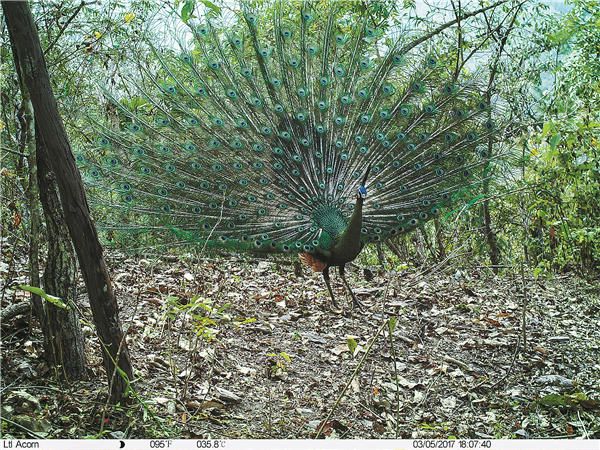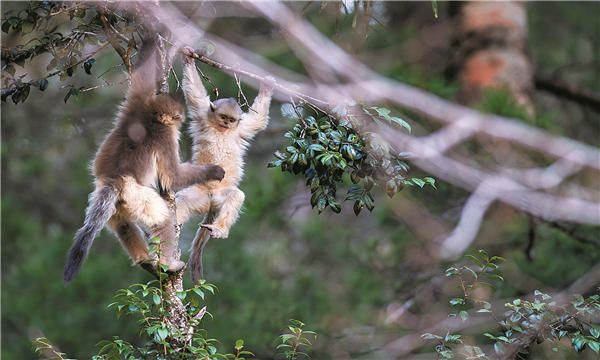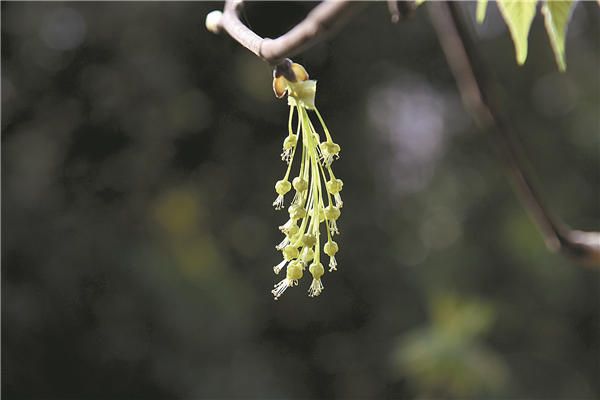Yunnan protects its wild side

Elephants, peafowl and elusive maples given the chance to thrive in China's most biodiverse province
According to the fifth Global Biodiversity Outlook report, biodiversity is declining at an unprecedented and intensifying rate. As the most biodiverse province in China, southwestern Yunnan is sharing its conservation strategy on the international stage.
Seventeen years after the province first introduced the concept of Species with Extremely Small Populations (SESP), Yunnan showcased its achievements in conservation on Dec 16 at a side event of the 15th meeting of the Conference of the Parties (COP15) to the UN Convention on Biological Diversity in Montreal, Canada.
"We will forever lose the opportunity for future development brought by some species if they go extinct," says Yang Hua, an official with the provincial forestry and grassland administration.
SESP was put forward by the province in 2005, as a concept to denote species that were found to be restricted in their geographic distribution and which showed weak population growth.
Ever since then, the province's conservation efforts have helped the population of Asian elephants reach around 360, and that of black-and-white snub-nosed monkeys is now 3,800.
Sun Weibang, director of the Kunming Botanical Garden, under the Kunming Institute of Botany of the Chinese Academy of Sciences, said that, during a decade of continuous development, Plant Species with Extremely Small Populations (PSESP), a term derived from SESP, was applied as a conceptual model to conserve native plants in countries such as Italy, Russia, Mexico, and Iraq.

Habitats protected
To conserve animal SESP, project developers were asked to involve animal habitats in their planning decisions by undertaking measures such as setting up ecological corridors, and building bridges and tunnels to facilitate the dispersal of animals.
One of the most iconic animals in the province, the green peafowl is listed as an endangered species on the International Union for Conservation of Nature's Red List, due to the rapid decline of its population, which stands at 600 in the province.
In December 2020, the Yunnan High People's Court ruled that the construction of a hydropower station on the Jiasa River should be suspended as it posed a possible threat to the habitat of green peafowl in the Konglonghe Nature Reserve in Shuangbai county, Chuxiong Yi autonomous prefecture.
The Yunnan case involving the green peafowl was the first such case of public interest litigation in China.
The Asian elephant, which is also under protection as a SESP, saw a "baby boom" in nearly every elephant herd during recent years, demonstrating the success of China's arduous protection efforts — especially important given that the population of the Asian elephant is showing a declining trend globally.
To elevate its conservation efforts, the province developed monitoring and early-warning systems for the giant creature by synchronizing information collected by methods such as infrared cameras, video monitoring and satellite positioning, and visualizing them on a specific mobile phone app installed on the phones of villagers living nearby.
Currently, there are 11 nature reserves for Asian elephants, covering an area of nearly 5,100 square kilometers, and the province has established around 800 hectares of "food stores" for elephants, said Wan Yong, director of the provincial forestry and grassland administration.
According to Wan, the Xishuangbanna Asian Elephant Rescue and Breeding Center has rescued 30 trapped, injured, or sick wild elephants in the past 20 years. China has also set up cooperative mechanisms, sharing conservation knowledge and technical training with neighboring countries such as Laos.

A tree reborn
After years of practice, Yunnan has formulated specific technical guidance for PSESP conservation, including methods such as in-situ, ex-situ, and near-situ conservation.
Before 2016, only five Acer yangbiense — a rare species of maple — had been discovered in Yunnan. They were found in 2001 by a PhD student from the Kunming Institute of Botany, Chinese Academy of Sciences.
At that time, only two of the discovered samples were able to propagate, so the new species was subsequently included as one of the 20 endangered species that require immediate protection in the province's conservation plan for SESP.
The nearby Malutang village was approached for assistance in the Acer yangbiense rescue efforts, and the village chief was tasked with ensuring protection for this plant.
With the help of the village chief, researchers from the botany institute were able to make a scientific breakthrough — they managed to artificially breed over 1,600 seedlings.
By analyzing the genetic diversity of the artificially-germinated seedlings and the five wild plants, researchers noted that even though all the seedlings were propagated from one of the five wild plants, there was pollen present from plants other than the five plants they had discovered.
Researchers thus expanded their search for more wild Acer yangbiense, and found 572 wild plants in 2016.
With the aid of the new plants, a total of 50,000 new seedlings were successfully reproduced.
"There is no doubt that our rescue effort has demonstrated effective coordination among relevant authorities, research institutes, and local communities," said Sun.

Acer yangbiense, a rare species of maple. [Photo/Xinhua]